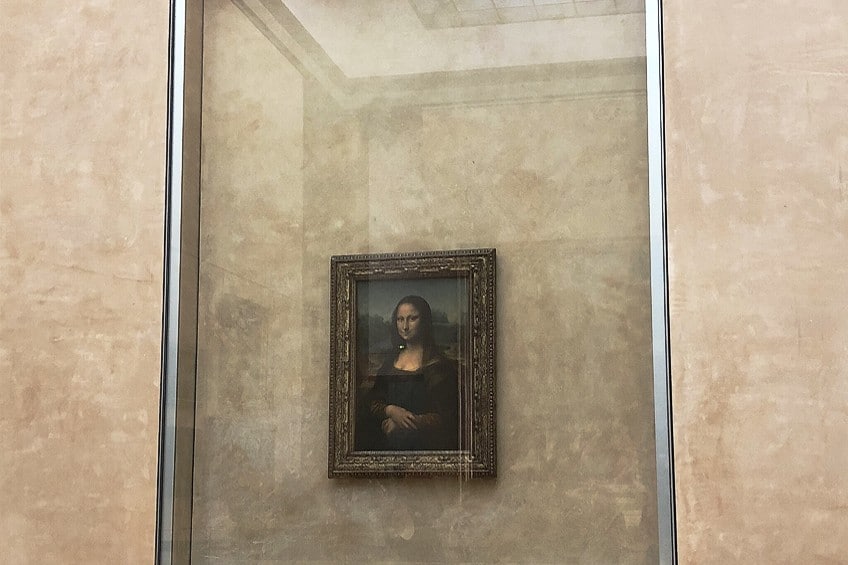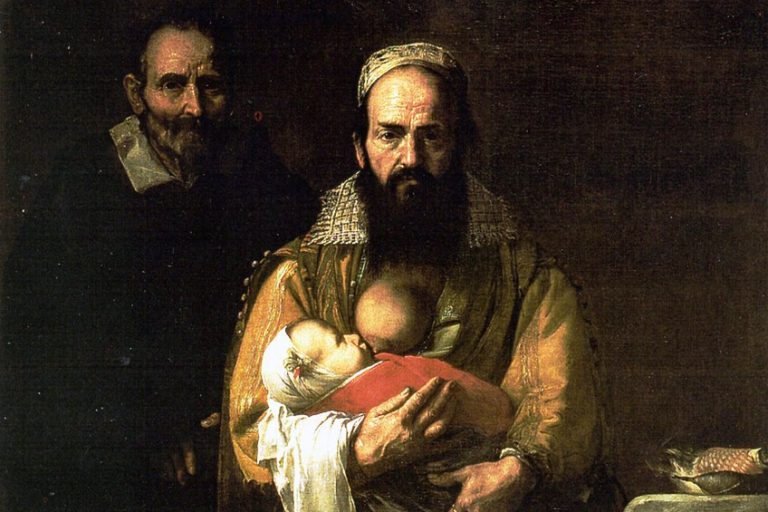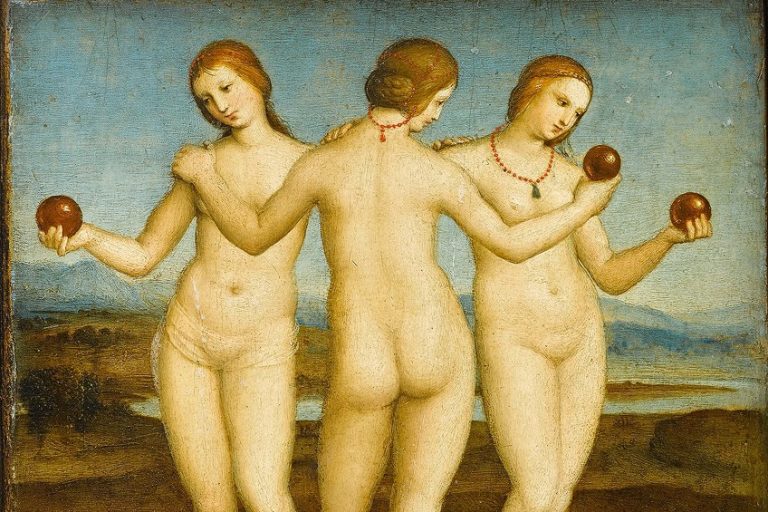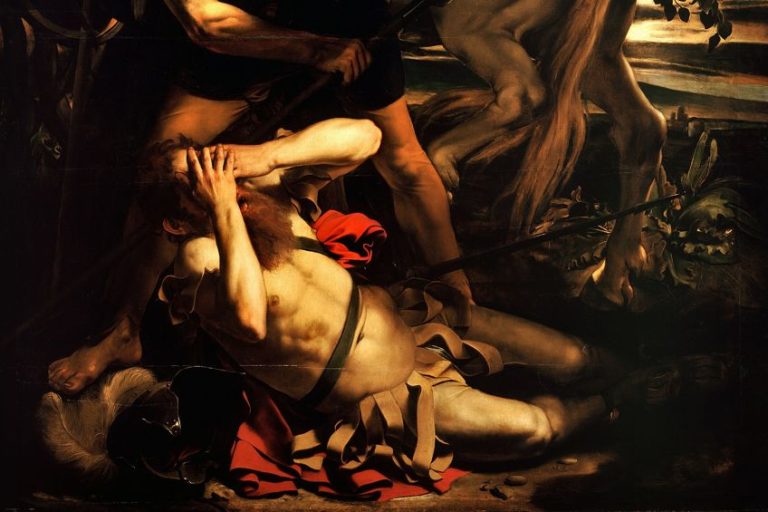Why Is the Mona Lisa So Famous? – Learn About the Iconic Work
Everyone is well aware of this iconic image, but why is the Mona Lisa so famous? What is the Mona Lisa’s significance, and why is the Mona Lisa so expensive? These are some of the questions that we will be answering in today’s article. Join us below as we find out more about the famous painting of the enigmatic smiling woman!
Why Is the Mona Lisa Famous?
| Artist | Leonardo da Vinci (1452 – 1519) |
| Date Completed | 1503 |
| Medium | Oil paint on canvas |
| Dimensions (cm) | 77 x 53 |
| Location | Louvre Museum, Paris, France |
Leonardo da Vinci’s painting of a Florentine lady placed against a mountainous environment has touched people all around the world, from the Italian Renaissance all the way to the present day. Because of her fame, some have attempted to vandalize her in order to gain attention for themselves and their beliefs. Everyone from Virgil Abloh to Marcel Duchamp has used her image in their own works. Some think that she is renowned because audiences can emotionally connect with her, while others argue that her mystery has contributed to her fame.
In fact, there are numerous various reasons which can explain the “Mona Lisa’s” significance, including the artistic achievements that it symbolizes as well as several notable events in the history of the painting.

Departure from the Status Quo of Renaissance Portraiture
Much of the artwork’s reputation can be traced to the painting’s distinctive qualities in comparison to other Renaissance portraits of women. While most ladies of the time were depicted in a tranquil profile, the lady represented in the Mona Lisa was depicted in a three-quarter perspective, making her presence much more visible to the observer. What also distinguishes her is that she stands before the audience in very modest clothing, as opposed to the highly ornate garments typically seen in artworks of the social elite throughout the Renaissance era.
Rather than focusing on ornamental symbols of social rank and wealth, the painting’s focal point is the woman’s face as she returns the viewer’s gaze.

The portrayal of emotion in the woman’s face was particularly unusual during the period. Upper-class sitters were often depicted with stoic, controlled looks to emphasize their preference for tranquility and humility over eruptions of overwhelming emotion. This enhanced the Mona Lisa‘s grin, leaving the visitor to speculate about her true nature and background. As a result of this, the Mona Lisa became a focus for reflection on human emotions.
Da Vinci’s distinctive sfumato, a smokey soft focus that removes harsh lines and makes his subject’s skin shine, is also used in the picture.
The artist also revealed his new comprehension of the facial musculature behind this glowing surface. While creating the Mona Lisa, Da Vinci was simultaneously researching anatomy by examining corpses in the Santa Maria Nuova hospital mortuary, which enabled him to create the earliest known anatomical depiction of a grin.
We Don’t Know Who the Painting Depicts
Another factor contributing to the mystery surrounding this famous painting is the woman’s identity. The subject of whether she was a real person has been discussed. While many historians believe she is Lisa Gherardini, the wife of rich Florentine trader Francesco del Giocondo, some academics have questioned this assertion due to a lack of compelling evidence for her supposed commission.
Because the figure in the artwork has never been definitively recognized, supporters of the artwork have imposed their own interpretations of her identity onto her.

For instance, authors from the late 18th-century French Romantic period idealized the lady in the Mona Lisa as an enchanting femme fatale figure. As a result of this, she has acquired eternal admiration, being constantly depicted and interpreted as a global object of elusive female yearning and mystery.
Some interpretations, such as Vasari’s, contend that Da Vinci never completed his picture of Gherardini and that the woman portrayed in the artwork is actually a portrait of Gherardini’s cousin, art patron Isabella d’Este.
She Was Stolen
It wasn’t until the 1860s that art experts began hailing the picture as a Renaissance masterpiece. The artwork was purchased by the Louvre Museum in 1804, but it did not attract many visitors until 1911 when headlines firmly established her in public awareness.
One August day that year, an Italian carpenter, Vincenzo Peruggia, working at the museum, decided to remove it by concealing it beneath his jacket and walked out of the institution.

The event prompted a meeting of the French Cabinet and the dismissal of the head of paintings at the museum. The resulting media frenzy prompted museumgoers to visit the vacant area where the famous artwork had previously hung at the museum. Mona Lisa dolls were created and sold, postcards were made, and a corset line was named after her (foreshadowing how she’s today used to promote a wide range of products).
When she was rediscovered two years later, even larger crowds flocked to see her, with more than 100,000 people visiting her at the Parisian museum in the first two days alone.
Parodies and Mass Production
The broad distribution of her portrayal in modern works of art and pop culture throughout the 20th and 21st centuries is a major reason why the Mona Lisa is so widely recognized today. The artwork had become well recognized by 1914, making her an ideal candidate for appropriation. The year after she was finally restored to the Louvre Museum, Kazimir Malevich, the Russian Suprematist made a mixed-media collage with a color replica of her in the middle.
Marcel Duchamp quickly developed his own version, starting with a monochrome postcard of the “Mona Lisa” on which he sketched a mustache, goatee, and lettering.
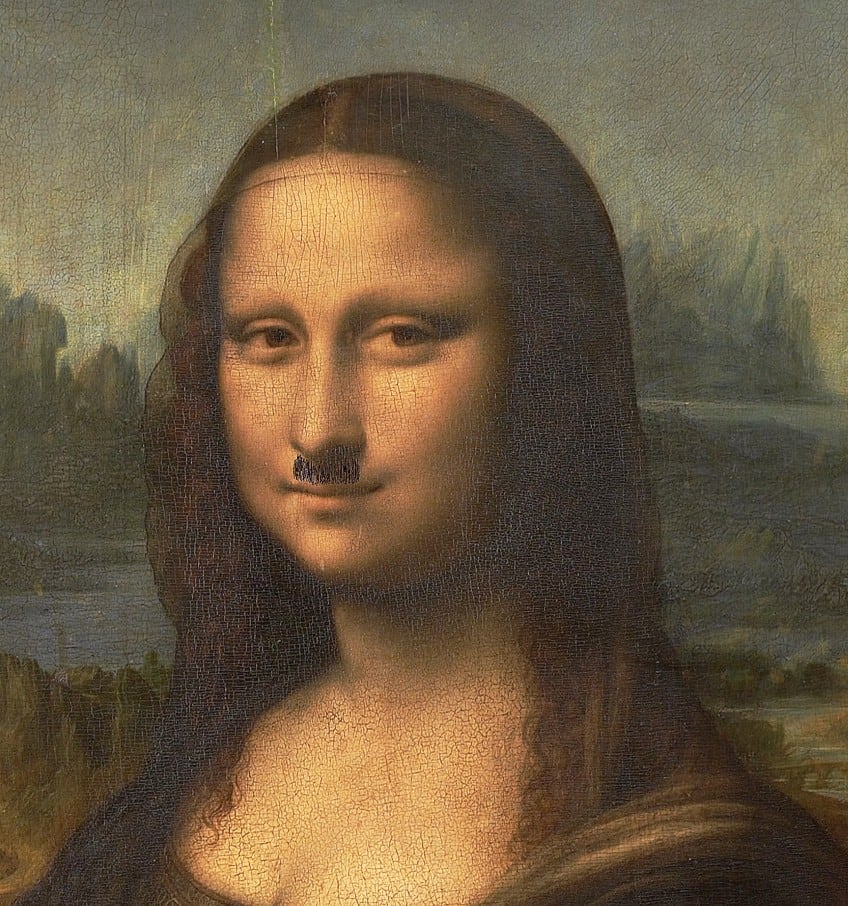
Fernand Léger, Philippe Halsman, and Fernando Botero were among the seminal painters who followed. In 1963, Andy Warhol took a print from a Met brochure to duplicate and serialize Da Vinci’s picture, which became the subject of one of his early silkscreen paintings. After Warhol’s peak, with the 1960s economic boom that brought a boom to advertising (particularly in America), the Mona Lisa began to appear often in advertising campaigns.
During the 1970s, she appeared in about 23 new advertisements every year, increasing to 53 in the next decade. Her face imprinted items with art-historical significance while also fuelling her personal appeal.
The Mona Lisa in France
The artwork has also been widely celebrated because of the location in which it is housed. It is displayed in its own private gallery in Paris’s famed Louvre museum. The Mona Lisa‘s placement in one of the world’s most prestigious and frequented museums has made it a famous French tourist destination. But how did it end up in France in the first place?
After its completion in Italy, the “Mona Lisa” finally ended up in the French King Frances I’s hands, who summoned Da Vinci into his court in the artist’s last years.

It remained in the ownership of the French monarchs for centuries until it was seized over by the public at the conclusion of the 18th century during the French Revolution. After briefly being claimed as Napoleon’s personal possession, it was eventually installed at the Louvre Museum in the 19th century, where it continues to draw large audiences today.
A Renowned Landmark of Paris
The 1960s boom, which increased advertising efforts, also ushered in mass travel, with Paris quickly becoming a prominent worldwide destination. Since Da Vinci introduced the artwork to Francis I’s court in the early 16th century, she has only left France a few times, making her virtually as permanent an attraction as other Parisian tourist spots.
The few occasions she’s left the museum have only fueled Mona Lisa fever, with the most notable being in 1963, when Jacqueline Kennedy helped organize a loan to display her at the Metropolitan Museum of Art in New York and the National Gallery of Art.
The Kennedys received her like a star and feted her with an official banquet. Americans took note and flocked in droves to see the artwork, with 1,751,520 visits to museums in the two-and-a-half months that the painting was in the country. A similar trip was carried out a decade later when the artwork visited Japan, and the international media coverage that followed sealed her standing as an icon.

Because of her fragility, the artwork is unlikely to leave the museum again, and those who make the trek to view her there will find her in the museum’s largest chamber—the Salle des États, a space originally used for legislative meetings by Napoleon III. Her impenetrable case and special wall attest to her exceptional status.
According to a leaked French Ministry of Culture survey from 2018, even with all of the treasures in the museum’s permanent collection, nine out of 10 people say they came to view Da Vinci’s woman.
The Mona Lisa Effect
The Mona Lisa effect, or the strange feeling that gives viewers the impression that the woman in the artwork’s eyes are following them as they move around, is an optical illusion used by Leonardo da Vinci. Though the phenomenon is slightly lessened by the woman’s right-leaning stare, it has been most frequently associated with the picture.
The eyes are the focus of the viewers’ attention, while the haunting lips remain in the periphery, producing the sense of an incomprehensible face.

This contributes to the overall confusion generated by her understanding smile’s spectrum of emotions. She evokes both joy and pain, intrigue and tragedy, wonder and solace. The smile looks to be there one minute and then seems to vanish the next.
The Price of the Mona Lisa
The Mona Lisa is a significant figure in Western art history and is regarded as one of the most renowned and iconic works in the world. The artwork was insured for $100 million in 1962, setting a record for the most expensive art insurance.
When converted into its current currency value, taking into account inflation throughout the decades, the artwork’s worth is estimated to be over $900 million.
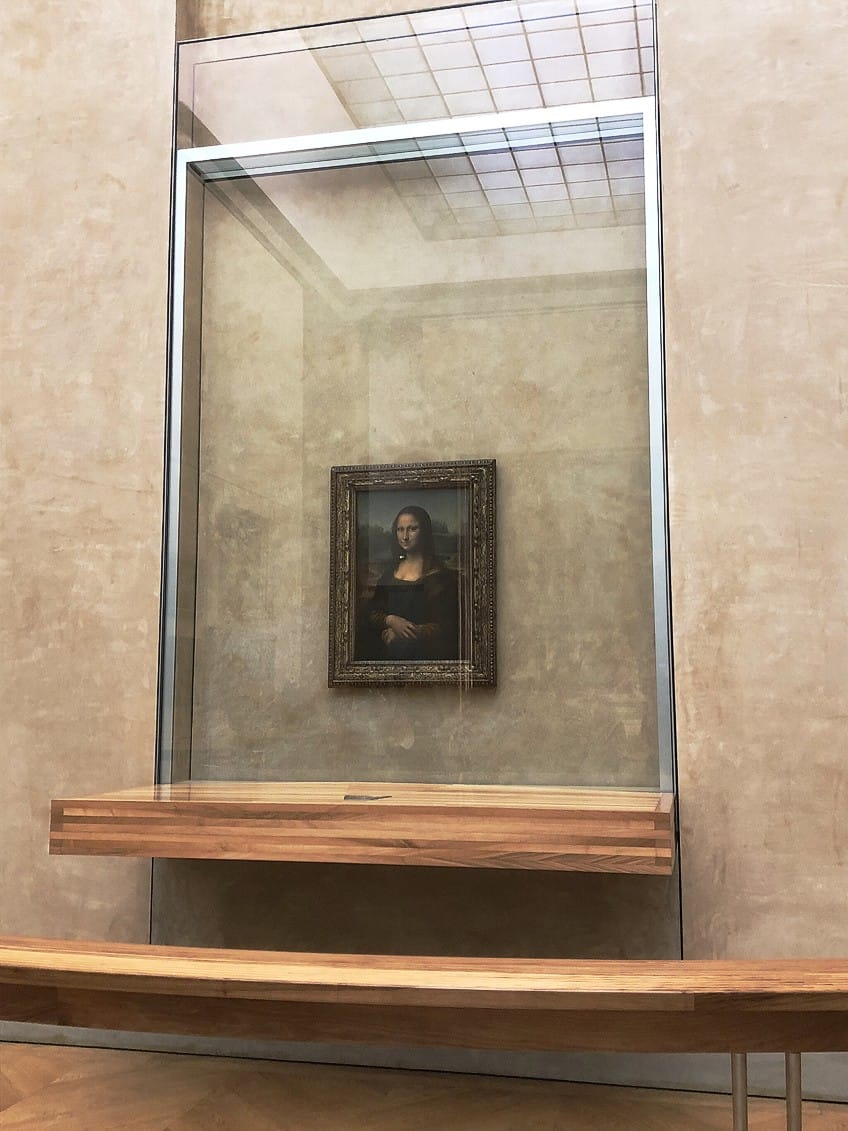
Since the artwork is public property, if France ever wanted to, it could possibly always sell the painting to keep its economy afloat. The Mona Lisa is widely regarded as a Renaissance masterpiece and a pioneering work of art. Its historical relevance, as well as Leonardo da Vinci’s talent, add to its worth.
So then, why is the “Mona Lisa” so famous? As we have found out, there are numerous reasons for the painting’s enduring fame throughout the years. It was a departure from the other portrait paintings of the Renaissance era and was created by one of the masters of painting, Leonardo da Vinci. It was made even more famous after it was stolen from the Louvre Museum by a man working there in 1911. Since then, it has been parodied countless times and has appeared in pop culture throughout the previous and current centuries.
Frequently Asked Questions
Why Is the Mona Lisa So Expensive?
It exemplifies Renaissance ideals, exhibiting Leonardo da Vinci’s mastery of techniques such as sfumato and his adept representation of human emotion. Its cultural importance significantly raises its monetary value. The Mona Lisa has earned unprecedented recognition and appeal. It has appeared in numerous publications and exhibits and is recognizable throughout the world. It is on display at the Louvre Museum and is not for sale. It is designated a French national treasure and is subject to very tight security measures. The fact that this painting can’t be bought on the market adds to its perceived worth. While the artwork has never been auctioned, other paintings by Leonardo da Vinci have sold for exorbitant sums. It has been valued at somewhere around $1 billion!
Why Is the Mona Lisa So Famous?
Leonardo da Vinci’s masterful approach and application of the sfumato method, an artistic method that uses basic degrees of light and shadow to depict form, are evident in the subject’s sculpted face. Leonardo da Vinci also demonstrates his understanding of human anatomy. The artist’s years of dedicated study are evident in the delicately crafted tresses and the meticulous representation of crumpled textures. Although her piercing eyes and grin were not seen as mysteries in the 18th century, viewers now appreciate and analyze her unusual gaze. Giorgio Vasari, a writer, subsequently complimented the artist’s ability to closely imitate life.
Isabella studied at the University of Cape Town in South Africa and graduated with a Bachelor of Arts majoring in English Literature & Language and Psychology. Throughout her undergraduate years, she took Art History as an additional subject and absolutely loved it. Building on from her art history knowledge that began in high school, art has always been a particular area of fascination for her. From learning about artworks previously unknown to her, or sharpening her existing understanding of specific works, the ability to continue learning within this interesting sphere excites her greatly.
Her focal points of interest in art history encompass profiling specific artists and art movements, as it is these areas where she is able to really dig deep into the rich narrative of the art world. Additionally, she particularly enjoys exploring the different artistic styles of the 20th century, as well as the important impact that female artists have had on the development of art history.
Learn more about Isabella Meyer and the Art in Context Team.
Cite this Article
Isabella, Meyer, “Why Is the Mona Lisa So Famous? – Learn About the Iconic Work.” Art in Context. July 31, 2023. URL: https://artincontext.org/why-is-the-mona-lisa-so-famous/
Meyer, I. (2023, 31 July). Why Is the Mona Lisa So Famous? – Learn About the Iconic Work. Art in Context. https://artincontext.org/why-is-the-mona-lisa-so-famous/
Meyer, Isabella. “Why Is the Mona Lisa So Famous? – Learn About the Iconic Work.” Art in Context, July 31, 2023. https://artincontext.org/why-is-the-mona-lisa-so-famous/.


